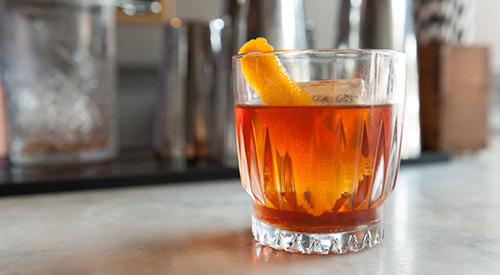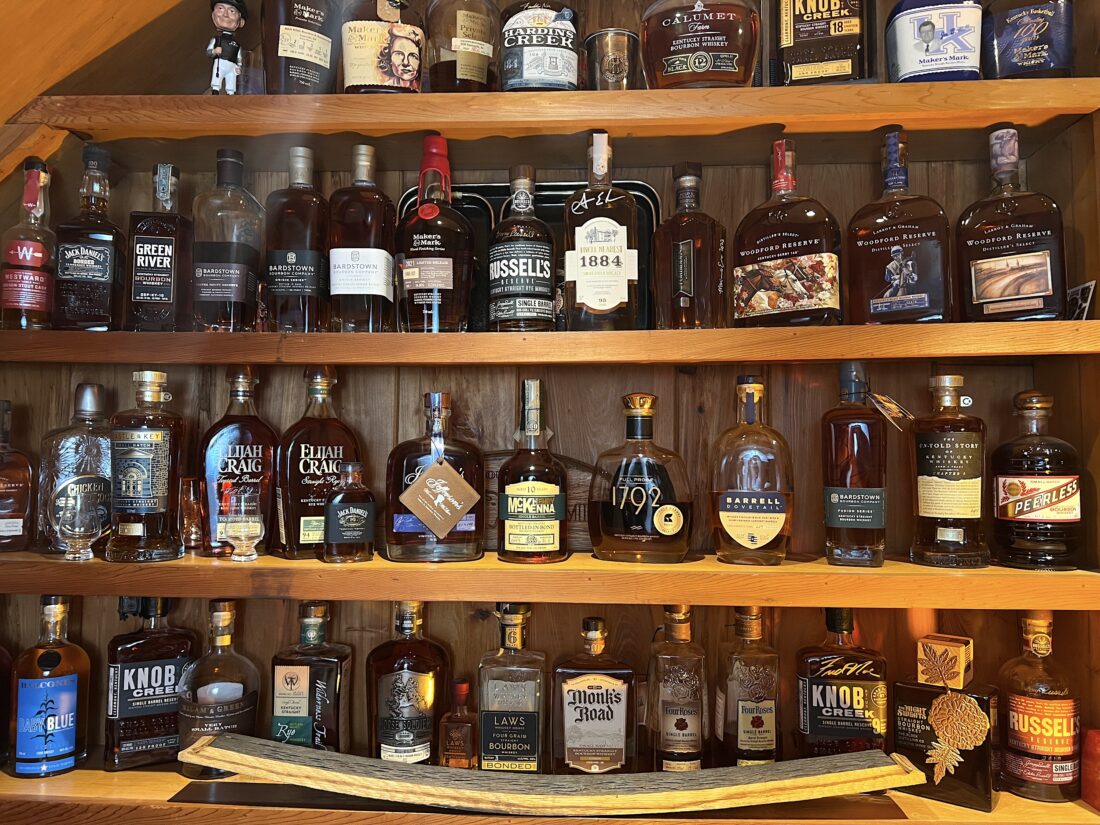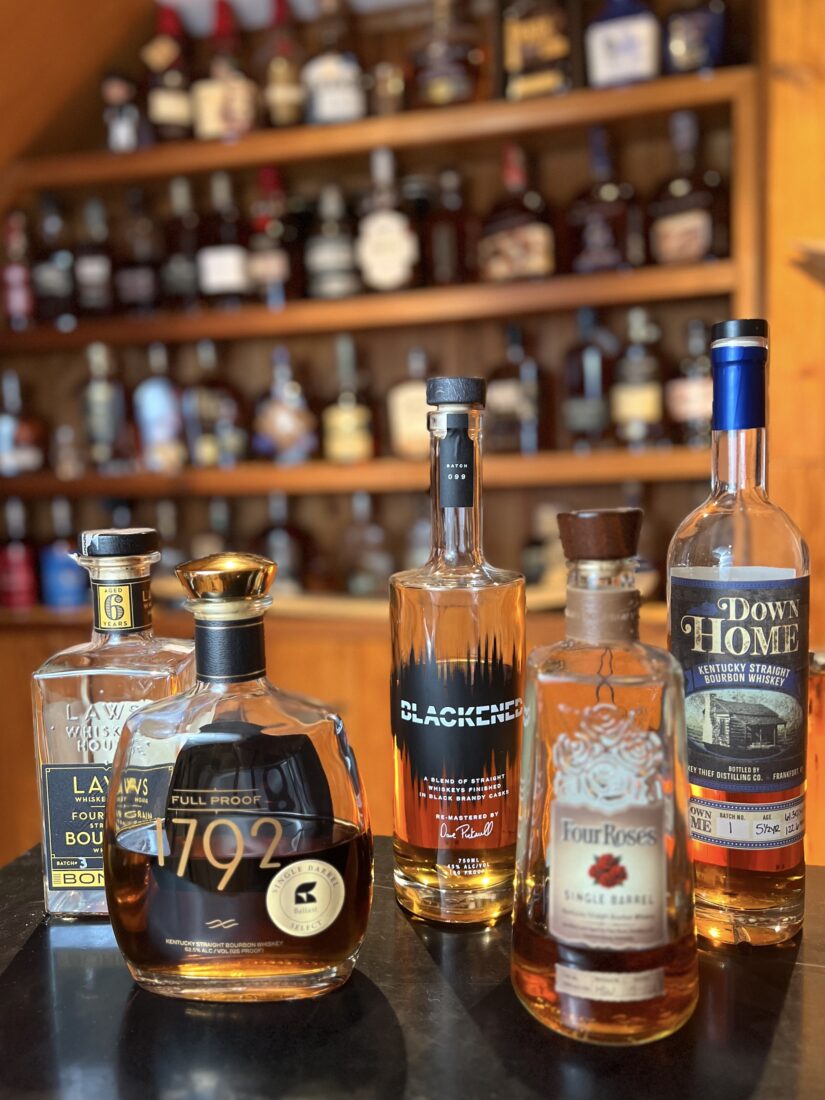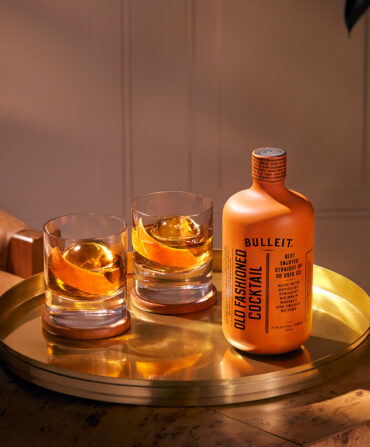Here’s a scenario bourbon aficionados will find familiar: You’ve acquired a sought-after bottle to add to your collection. Presumably, at some point, you’ll want to open that bottle for a pour with whiskey-loving friends. You also likely have several other special-occasion bottles that get slowly sipped on over time. How long will those open bottles stay fresh before perceptible changes in taste and aroma set in? The answer is…it depends.
“Bourbon is not like wine—it keeps nicely even after opening, for extended periods of time,” says Kentucky Bourbon Hall of Fame inductee and Buffalo Trace tour guide Freddie Johnson. “The secret is putting it away. Keep your bottles out of direct light. Dark, cool areas like wine cellars are best, but closets and basements work fine. Heat is the enemy of storing any good bourbon, opened or unopened.”

There is science to support this conventional wisdom. All whiskeys are bottled at no lower than 80 proof, or 40 percent alcohol by volume, which prevents bacteria and other microbes from colonizing your bourbon. Bourbon also ceases to mature once it’s emptied out of a barrel, and most bottles are purged of air before they’re sealed. A cork closure may introduce a tiny bit of air over time, but stored with care, an unopened bottle of bourbon will remain unchanged for many years.
Once the seal is cracked, astute drinkers might notice some subtle changes. One difference that might be detected is in the first pour from a bottle, commonly referred to as the neck pour. “People will tell you not to judge a bottle by the neck pour—it can be the best flavor, the least amount of flavor, or just weird flavors coming out,” says Tony Aiken, sensory and education administrator with the Kentucky-based Brewing and Distilling Analytical Services (BDAS), a leader in quality control testing and research. Many people assume the difference has to do with exposure to oxygen, but Aiken points to another important variable—volatilization. This process refers to the delicate, volatile liquid compounds that are expelled from the spirit and trapped in the headspace as a vapor. It’s the same as swirling a snifter of bourbon and inhaling the aroma cloud it releases. These subtle top notes are also the first to go as more bourbon is poured from the bottle, the liquid is sloshed around, and the fill level decreases.
“They’re small molecules, which is why they volatize so easily,” Aiken says. “I suspect they’re also the most vulnerable and susceptible to abuse from ultraviolet light, oxidation, and certainly volatilization.”

Flavor changes from exposure to oxygen require more time and more exposed surface area, both of which increase as a bottle slowly empties. It’s hard to say when it becomes noticeable, though I’ve found that I can sometimes detect a faint musty note in less-than-a-third-full bottles that have been sitting for about a year. The aroma and flavor seem more muted than what I remember from those first sips. Heat and temperature fluctuations also accelerate these changes, and especially exposure to sunlight or even fluorescent lighting. “Ultraviolet light clobbers everything,” Aiken says.
Aiken has investigated the impact of all these variables and more through studies primarily involving gin, which shares many chemical compounds with bourbon, but not all. “I abused the crap out of those samples; I really did bad things to them,” Aiken says of his trials. “The thinking was: If you can’t pick up changes with this much abuse, you’re not going to be able to pick up anything from slight levels of everyday use.”
In Aiken’s experiments, gas chromatography-mass spectrometry analysis confirmed a significant loss of intensity in some chemical compounds while others became more dominant. Human sensory ability is equally if not more sophisticated, and we’re better at picking up that “something” is different even if we can’t pinpoint specifics. But we also become accustomed to those changes very quickly. Professional sensory analysts often dilute bourbon samples down to 20 percent alcohol by volume to help them better detect these subtle differences, something no experienced whiskey drinker would dare do with a fine bottle of bourbon. “There are so many complex things going on in a glass of whiskey or even in a cup of coffee,” says BDAS founder Gary Spedding. Especially if you’re not tasting side-by-side with a fresh sample, “can you really detect a slight difference?”
If you’re concerned about the diminishing quality of your open bourbons, Aiken suggests using up the nearly empty bottles in mixed drinks and opening a new one for neat pours. But if it’s a bourbon you particularly enjoy straight, drink up! As Johnson likes to remind people, “A good bottle of spirit is meant to be shared with friends and loved ones. Those bottles were created to provide you the opportunity to make a memory. They may not remember what you poured, but they will always remember that you shared it with them.”








